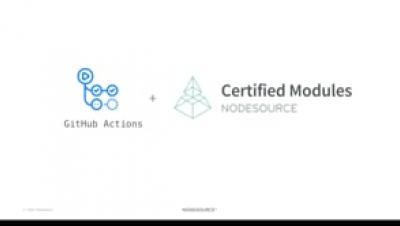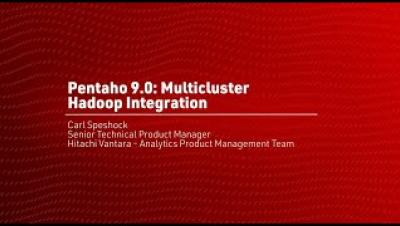Systems | Development | Analytics | API | Testing
%term
NodeSource GitHub Action - Code Risk, Compliance and Security Checks in GitHub PRs
Pentaho 9.0 Teaser: Multcluster Enhancements
Centralized Kong Management with Active Directory/LDAP
Kong Enterprise provides customers with the fastest, most scalable and flexible API management solution in the market. One of Kong’s main advantages is the ability to quickly deploy and integrate with a customer’s ecosystem of already-deployed solutions for identity management and monitoring. As customers choose Kong to drive the decentralization of their applications, it’s critical to empower teams for end-to-end deployment while maintaining security and compliance.
SQL Server Best Practices
One billion files in Ozone
Apache Hadoop Ozone is a distributed key-value store that can manage both small and large files alike. Ozone was designed to address the scale limitations of HDFS with respect to small files. HDFS is designed to store large files and the recommended number of files on HDFS is 300 million for a Namenode, and doesn’t scale well beyond this limit.
How to Use Lambdas in Ruby
Lambdas are a powerful feature of the Ruby language. They allow you to wrap logic and data into a portable package. In this post, we’ll cover how and when to use lambdas. You'll also learn about the difference between lambdas and Procs, and the performance profile of lambda functions. The code examples have been tested with 2.6 and 2.7 and should work with most modern Rubys.
Remote Debugging: Everything You Need to Know
Nowadays, the term ‘remote debugging’ instills fear into even the bravest of dev hearts. Palms sweaty, knees weak, and arms ready (to code) they dive into what they’re sure will end in much pain and possibly a few broken pieces of code. This scenario and these feelings are common to devs everywhere, where many opt to take the trusted path of debugging on their *own* machines.
RBAC - Role Based Access Control
Last week, we announced NSolid 3.11.1, which introduces Role Based Access Control along with support for Node.js Erbium v12.16.2 and Dubnium v10.20.1. You can read here for more information. NodeSource’s Role Based Access Control feature empowers Org Admins to create, define, manage and assign roles that provide access privileges to distinct user-actions and/or views in the NSolid Console and accounts.nodesource.com.
Operational Database Availability
This blog post is part of a series on Cloudera’s Operational Database (OpDB) in CDP. Each post goes into more details about new features and capabilities. Start from the beginning of the series with, Operational Database in CDP. This blog post gives you an overview of the high availability configuration capabilities of Cloudera’s OpDB. Cloudera’s Operational Database (OpDB) is a cluster-based software, which comes configured for High Availability (HA) out of the box.










